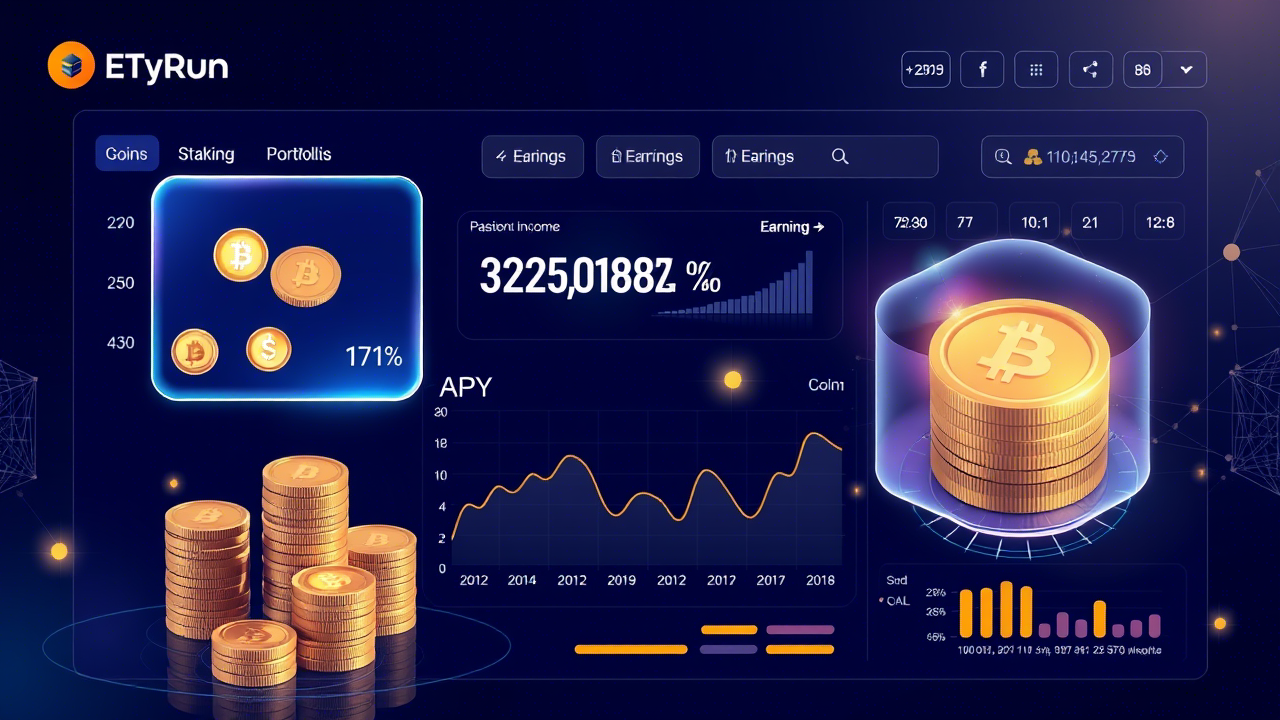Understanding crypto prices can feel overwhelming for new investors, but mastering price analysis is crucial for making informed investment decisions. Whether you’re tracking daily price movements or planning long-term investments, knowing how to read market data helps you navigate the volatile world of digital assets effectively.
The cryptocurrency market operates 24/7, unlike traditional stock markets, making real-time price tracking essential for traders and investors. From Bitcoin reaching new highs to emerging altcoins showing promising growth patterns, staying updated with market movements can significantly impact your investment outcomes.
Crypto Prices Today
Current crypto prices reflect real-time market sentiment and global economic factors. Today’s crypto market shows dynamic price movements influenced by regulatory news, institutional adoption, and technological developments across various blockchain networks.
Major cryptocurrencies like Bitcoin and Ethereum often set the tone for the entire market. When Bitcoin experiences significant price changes, it typically creates a ripple effect across other digital assets. This correlation happens because Bitcoin remains the dominant cryptocurrency, representing roughly 40-50% of the total market capitalization.
Market makers and institutional investors play crucial roles in today’s pricing mechanisms. Their large-scale transactions can cause substantial price swings, especially during low-volume trading periods. Understanding these market dynamics helps individual investors make better timing decisions for their trades.
The Indian cryptocurrency market has shown remarkable growth, with domestic exchanges reporting increased trading volumes. Local factors such as regulatory clarity and banking partnerships with crypto exchanges directly influence how crypto prices move in the Indian market.
Crypto Prices Chart
Technical analysis through price charts provides valuable insights into market trends and potential future movements. Candlestick charts, line graphs, and volume indicators help traders identify patterns that suggest buying or selling opportunities.
Professional traders rely on multiple timeframes when analyzing charts. Short-term charts (1-minute to 1-hour) help with day trading decisions, while longer timeframes (daily, weekly, monthly) reveal broader market trends. This multi-timeframe analysis approach reduces the risk of making decisions based on temporary price fluctuations.
Support and resistance levels on charts indicate where prices tend to bounce or break through. These psychological price points often align with round numbers or previous high and low points. When prices approach these levels, increased trading activity typically occurs as investors decide whether to buy, sell, or hold their positions.
Moving averages smooth out price data to show clearer trends. The 50-day and 200-day moving averages are particularly important indicators. When shorter-term averages cross above longer-term ones, it often signals bullish momentum. Conversely, bearish signals emerge when short-term averages fall below long-term ones.
Volume analysis alongside price charts provides confirmation of trend strength. High volume during price increases suggests strong buying interest, while high volume during declines indicates selling pressure. Low volume movements often lack sustainability and may reverse quickly.
Crypto Prices Prediction
Price prediction in cryptocurrency markets combines technical analysis, fundamental analysis, and market sentiment evaluation. While no prediction method guarantees accuracy, systematic approaches help investors make more informed decisions about potential price movements.
Machine learning algorithms increasingly assist in price forecasting by analyzing vast amounts of historical data, social media sentiment, and network activity. However, these models work best when combined with human judgment and understanding of market fundamentals rather than used in isolation.
Fundamental analysis examines the underlying value and potential of blockchain projects. Factors like developer activity, partnership announcements, technological upgrades, and adoption rates influence long-term price trajectories. Projects with strong fundamentals typically show more resilience during market downturns.
Market cycles play significant roles in price predictions. Historically, cryptocurrency markets have experienced four-year cycles loosely aligned with Bitcoin halving events. Understanding these patterns helps investors position themselves for potential opportunities while avoiding major market peaks and troughs.
Regulatory developments significantly impact price predictions. Positive regulatory news often triggers bullish price movements, while uncertainty or negative regulations can cause sharp declines. Staying informed about global regulatory trends helps anticipate potential market reactions.
Crypto Prices India
The Indian cryptocurrency market has unique characteristics that influence local pricing dynamics. Domestic exchanges like WazirX, CoinDCX, and Zebpay often show slight price variations compared to global exchanges due to local supply and demand factors.
Rupee-based trading pairs provide Indians with direct access to cryptocurrency markets without foreign exchange complications. This convenience has contributed to increased adoption among retail investors who prefer dealing in familiar currency denominations rather than USD-based pricing.
Banking relationships with cryptocurrency exchanges affect liquidity and pricing in India. When banks support seamless INR deposits and withdrawals, trading volumes increase, typically leading to prices that closely track global markets. Conversely, banking restrictions can create price premiums or discounts.
Government policies and RBI statements significantly influence cryptocurrency investment sentiment in India. Positive policy developments often trigger buying sprees, while negative news can cause temporary price depression as investors adopt wait-and-see approaches.
Tax implications also affect Indian crypto pricing. The 30% tax on cryptocurrency gains and 1% TDS on transactions create additional costs that traders factor into their pricing decisions. Understanding these tax impacts helps investors calculate true returns on their investments.
Crypto Market Prices
Overall market capitalization serves as a crucial indicator of the cryptocurrency ecosystem’s health and growth trajectory. Total market cap fluctuations reveal whether money is flowing into or out of digital assets as an investment class.
Market dominance percentages show how value is distributed among different cryptocurrencies. Bitcoin dominance typically ranges between 40-70%, with higher percentages indicating market uncertainty and flight to the most established digital asset. Lower Bitcoin dominance suggests increased confidence in alternative cryptocurrencies.
Sector-specific analysis within crypto markets reveals trends in different blockchain applications. DeFi tokens, gaming cryptocurrencies, NFT-related projects, and infrastructure coins often move in different patterns based on their unique value propositions and market cycles.
Correlation analysis between crypto prices and traditional assets provides insights into market maturation. As institutional adoption increases, some cryptocurrencies show stronger correlations with stocks or commodities, while others maintain independence from traditional market movements.
Global economic factors increasingly influence crypto market prices. Inflation rates, currency devaluations, geopolitical tensions, and monetary policy decisions create macro-economic environments that either support or challenge cryptocurrency valuations.
Crypto Prices Live
Real-time price tracking has become essential for active cryptocurrency traders and investors. Live price feeds provide up-to-the-second market data that enables quick decision-making in fast-moving market conditions.
WebSocket connections power most live price displays, ensuring minimal delay between actual trades and displayed prices. This technology advancement has made real-time trading accessible to retail investors who previously faced significant data delays compared to professional traders.
Multiple exchange price aggregation gives more accurate market representations than single-exchange data. Price aggregators combine data from major exchanges to provide weighted average prices that better reflect true market values.
Alert systems integrated with live price feeds help investors manage their portfolios without constant monitoring. Price alerts, volume alerts, and technical indicator notifications enable systematic approaches to market participation while maintaining work-life balance.
Mobile applications with live price features have democratized access to professional-grade market data. Investors can now monitor their portfolios and make trading decisions from anywhere, contributing to increased market liquidity and participation.
Crypto Historical Prices
Historical price analysis provides context for current market conditions and helps identify long-term trends. Studying past price movements reveals patterns that may repeat, though past performance never guarantees future results.
Cryptocurrency markets have shown extreme volatility throughout their history. Bitcoin’s journey from cents to tens of thousands of dollars demonstrates the potential for massive returns alongside equally dramatic losses. This historical context helps investors understand risk-reward profiles.
Major market events create reference points for historical analysis. Events like the 2017 bull run, 2018 crypto winter, COVID-19 market crash and recovery, and institutional adoption waves provide lessons about market behavior during different scenarios.
Long-term holders benefit from understanding historical accumulation and distribution phases. Smart money often accumulates during quiet periods and distributes during euphoric market tops. Recognizing these patterns helps individual investors align their strategies accordingly.
Seasonal patterns in crypto prices have emerged over multiple years. Certain months typically show stronger performance, though these patterns can break as markets evolve and mature. Historical analysis helps identify these tendencies without relying on them blindly.
Crypto Prices in INR
Rupee-denominated cryptocurrency pricing simplifies investment calculations for Indian investors. Direct INR pricing eliminates foreign exchange rate considerations that can complicate profit and loss calculations when dealing with USD-based prices.
Local exchange rate fluctuations between USD and INR affect cryptocurrency values for Indian investors even when global crypto prices remain stable. A weakening rupee increases crypto values in INR terms, while a strengthening rupee has the opposite effect.
Premium and discount patterns in INR prices compared to global averages reveal local market sentiment. Premiums often indicate strong local demand, while discounts might suggest selling pressure or liquidity constraints in Indian markets.
Payment gateway integrations with Indian banks enable seamless INR transactions for cryptocurrency purchases. UPI, NEFT, and IMPS payment methods have made crypto investing as convenient as traditional investment options for Indian users.
Tax calculation becomes more straightforward with INR-based pricing. Investors can directly calculate their gains and losses in rupees, making compliance with Indian tax regulations more manageable compared to converting USD-based transactions.
What Are Crypto Prices Today
Today’s crypto prices reflect a complex interplay of global factors, technological developments, and market sentiment. Understanding current price levels requires analyzing multiple data points rather than focusing solely on absolute price numbers.
Market capitalization provides better context than individual coin prices. A cryptocurrency trading at ₹100 with a small supply might represent a larger investment opportunity than one trading at ₹10 with a massive supply. Always consider market cap alongside price per unit.
Trading volume accompanies price data to indicate market activity levels. High volume typically validates price movements, while low volume suggests limited market participation. This relationship helps distinguish between meaningful price changes and temporary fluctuations.
Price changes over different timeframes paint complete pictures of market momentum. Daily, weekly, monthly, and yearly percentage changes reveal whether current prices represent short-term corrections or longer-term trend reversals.
Comparison with all-time highs and lows provides perspective on current valuation levels. Cryptocurrencies trading near historical highs might face resistance, while those near lows could present value opportunities or signal fundamental problems.
Why Is Crypto Market Falling
Market corrections in cryptocurrency occur due to various interconnected factors that create selling pressure across digital assets. Understanding these factors helps investors maintain perspective during difficult market periods and avoid emotional decision-making.
Regulatory uncertainty often triggers market-wide selling as investors anticipate potential restrictions or unfavorable policies. News about government crackdowns, exchange regulations, or tax policy changes can cause immediate price reactions as markets price in increased risks.
Macroeconomic factors like interest rate changes, inflation concerns, and currency instability affect cryptocurrency valuations. When traditional investment returns become more attractive, some investors move capital away from riskier crypto assets, creating downward price pressure.
Technical factors such as leverage liquidations amplify market movements. When highly leveraged positions get forced to close due to price declines, the resulting sell orders create additional downward pressure that can cascade into larger market corrections.
Market sentiment and fear cycles contribute to extended downturns. Negative news coverage, social media pessimism, and fear of missing recovery opportunities can keep investors on the sidelines, reducing buying pressure needed for price stabilization.
Institutional behavior significantly impacts market direction. Large-scale selling by institutional investors, reduced corporate treasury allocations to crypto, or decreased institutional adoption announcements can influence overall market confidence and pricing.
How Much Is 1 Crypto in Rupees
Converting cryptocurrency units to rupees requires specifying which cryptocurrency you’re referencing, as “1 crypto” could mean 1 Bitcoin, 1 Ethereum, or 1 unit of any digital asset. Each cryptocurrency has different supply characteristics and pricing structures.
Bitcoin pricing in rupees typically ranges from several lakhs to crores depending on market conditions. As the most established cryptocurrency, Bitcoin often serves as a reference point for the broader market, making its INR value particularly important for Indian investors.
Ethereum values in rupees usually fall below Bitcoin prices but represent the second-largest cryptocurrency by market capitalization. ETH prices in INR terms help investors understand the blockchain technology investment landscape beyond just Bitcoin.
Altcoin prices in rupees vary dramatically, from fractions of a rupee to thousands of rupees per unit. These variations occur due to different token supply mechanics, utility functions, and market adoption levels across various blockchain projects.
Price per unit becomes less meaningful than market capitalization and percentage gains for investment decisions. A cryptocurrency costing ₹1 per unit isn’t necessarily cheaper than one costing ₹1,000 if their relative market caps and growth potentials differ significantly.
Bitcoin Price
Bitcoin remains the dominant cryptocurrency and price leader for the entire digital asset market. Its price movements often predict broader market trends, making Bitcoin analysis essential for understanding cryptocurrency markets generally.
Institutional adoption continues driving Bitcoin’s long-term price appreciation. Companies adding Bitcoin to treasury reserves, financial institutions offering Bitcoin services, and government adoption create sustained demand that supports higher price levels over time.
Bitcoin halving events historically correlate with significant price cycles. These programmed supply reductions occur approximately every four years, creating supply constraints that, combined with steady or growing demand, have historically led to price appreciation.
Network fundamentals like hash rate, active addresses, and transaction volumes provide insights into Bitcoin’s underlying health. Strong network metrics typically support higher prices, while declining fundamentals might indicate potential price weakness ahead.
Regulatory clarity around Bitcoin investments influences institutional participation and retail adoption. Clear regulatory frameworks encourage larger investments, while uncertainty can limit adoption and price growth potential.
Cryptocurrency Price in India
Indian cryptocurrency exchanges display prices in rupees, making investment decisions more intuitive for domestic investors. This local pricing eliminates the mental conversion step required when dealing with USD-denominated global exchanges.
Price discovery in India occurs through local supply and demand dynamics while staying broadly aligned with global markets through arbitrage opportunities. Significant deviations from global prices typically get corrected quickly by professional traders.
Regulatory developments specifically affecting India create unique price movements in domestic markets. RBI policies, government statements, and tax regulation changes can cause Indian crypto prices to diverge temporarily from global trends.
Banking infrastructure supporting crypto exchanges affects price stability and trading volumes in India. Smoother banking relationships typically lead to better price discovery and reduced volatility compared to periods of banking restrictions.
Local investor sentiment and adoption rates influence crypto prices in India. Growing awareness, educational initiatives, and positive media coverage contribute to increased demand and potentially higher prices for popular cryptocurrencies.
Crypto Prices Live
Live cryptocurrency price feeds have revolutionized how investors monitor and react to market movements. Real-time data enables quick decision-making that can significantly impact trading outcomes in volatile markets.
Professional trading platforms integrate live price data with advanced charting tools, order management systems, and risk controls. These integrated systems allow traders to implement sophisticated strategies based on real-time market conditions.
Mobile applications with live price notifications help investors stay connected to markets without constant screen watching. Push notifications for significant price movements enable timely responses to market opportunities or risk management needs.
API access to live price data has spawned an ecosystem of third-party applications, portfolio trackers, and automated trading systems. This technological infrastructure makes professional-grade market data accessible to retail investors.
Latency considerations become important for active traders using live price feeds. Milliseconds can matter in fast-moving markets, making data feed quality and connection speeds crucial factors for serious trading activities.
Solana Price
Solana has emerged as a significant blockchain platform with price movements often independent of broader market trends. Its high-performance blockchain capabilities and growing ecosystem contribute to unique valuation factors.
Developer activity and project launches on Solana directly influence its token price. New decentralized applications, NFT projects, and DeFi protocols choosing Solana create increased demand for SOL tokens needed for transaction fees and network participation.
Network performance metrics like transaction throughput, uptime, and fees affect Solana’s competitive position and price potential. Superior technical performance compared to other blockchain networks can justify premium valuations during favorable market conditions.
Institutional partnerships and enterprise adoption provide fundamental support for Solana’s price. Major companies choosing Solana for blockchain applications create long-term demand that extends beyond speculative trading activity.
Competition with other smart contract platforms creates dynamic pricing relationships. Solana’s price performance often gets compared with Ethereum, Cardano, and other blockchain platforms as investors evaluate relative value propositions.
Cryptocurrency Market Today
Today’s cryptocurrency market reflects ongoing evolution from speculative trading toward practical utility and institutional adoption. This maturation process creates both opportunities and challenges for different types of investors.
Market sentiment indicators like Fear and Greed Index provide insights into current investor psychology. Extreme fear often presents buying opportunities for long-term investors, while extreme greed might signal caution for new positions.
Sector rotation within cryptocurrency markets shows investors moving between different blockchain applications based on trends and performance. DeFi, gaming, infrastructure, and privacy coins experience different cycles of investor interest and capital allocation.
Global economic conditions increasingly influence cryptocurrency market performance. Inflation concerns, currency devaluations, and monetary policy changes create macro-economic environments that either support or challenge digital asset valuations.
Innovation announcements and technological breakthroughs continue driving market interest and price movements. Successful launches of new blockchain features, scaling solutions, or interoperability protocols can trigger significant capital flows toward related projects.
Crypto News
Staying informed about cryptocurrency news helps investors understand price movements and anticipate future trends. News events often create immediate market reactions that present both opportunities and risks for active traders and long-term investors.
Regulatory news carries particular weight in cryptocurrency markets due to the evolving legal landscape surrounding digital assets. Positive regulatory developments typically boost prices, while restrictive policies can cause immediate selling pressure across multiple cryptocurrencies.
Partnership announcements between cryptocurrency projects and traditional companies often trigger price increases. These collaborations validate blockchain technology adoption and create new use cases that support fundamental value propositions.
Technical developments like protocol upgrades, security improvements, and scaling solutions affect long-term project viability and pricing. Investors who understand technical implications of news events can make more informed investment decisions than those reacting solely to headlines.
Market analysis and expert opinions help interpret news events within broader market contexts. Professional insights can distinguish between temporarily impactful news and developments with lasting significance for cryptocurrency valuations.
Cryptocurrency List
Comprehensive cryptocurrency lists help investors discover and research investment opportunities across the digital asset ecosystem. Understanding the breadth of available options enables better portfolio diversification and risk management.
Market capitalization rankings provide starting points for investment research. Larger market cap cryptocurrencies typically offer more stability and liquidity, while smaller projects might present higher growth potential alongside increased risks.
Sector categorization within cryptocurrency lists helps investors understand different blockchain applications and investment themes. Categories like payments, smart contracts, DeFi, gaming, and privacy coins each have unique risk-reward characteristics.
Exchange listings indicate liquidity and accessibility for different cryptocurrencies. Projects listed on major exchanges typically offer better trading experiences and price discovery compared to those available only on smaller platforms.
Project fundamentals like development activity, community size, and real-world adoption help evaluate long-term potential beyond current price levels. Strong fundamentals often support sustainable price growth over time.
Due diligence requirements increase with lesser-known cryptocurrencies on comprehensive lists. Investors should research team backgrounds, technology capabilities, and competitive positioning before making investment decisions in newer or smaller projects.
Also Visit | Coin Market Cap for all the coins list and charts
FAQ
What factors influence crypto prices the most?
Supply and demand dynamics, regulatory developments, institutional adoption, technological innovations, and overall market sentiment are the primary factors driving cryptocurrency price movements.
How often do crypto prices change?
Crypto prices change continuously throughout the day since crypto markets operate 24/7, unlike traditional stock markets with specific trading hours.
Are crypto prices the same on all exchanges?
No, slight price differences exist between exchanges due to varying liquidity, trading volumes, and local supply-demand factors, though arbitrage typically keeps differences minimal.
What’s the best time to check crypto prices?
There’s no single best time since markets are always active, but checking prices during high-volume periods typically provides more accurate market representations.
How do I convert crypto prices to Indian rupees?
Most Indian crypto exchanges display prices directly in INR, or you can multiply USD prices by current USD-INR exchange rates for conversions.
Why do crypto prices seem more volatile than stocks?
Cryptocurrency markets are newer, less regulated, have lower overall market caps, and include more speculative trading, all contributing to higher volatility compared to established stock markets.
Can I predict crypto prices accurately?
No prediction method guarantees accuracy, but technical analysis, fundamental research, and market trend analysis can help make more informed investment decisions.
What should beginners focus on when tracking crypto prices?
Beginners should focus on major cryptocurrencies, understand market cap alongside price, learn to read basic charts, and avoid making emotional decisions based on short-term price movements.
Final Thought
Understanding crypto prices requires balancing technical analysis, fundamental research, and market psychology. While price tracking tools and real-time data provide valuable information, successful crypto investing depends more on understanding underlying technology, market trends, and risk management than on predicting short-term price movements. Focus on educational learning, diversified approaches, and long-term thinking rather than trying to time perfect market entry and exit points.












Leave a Reply